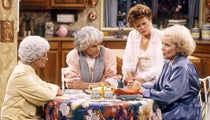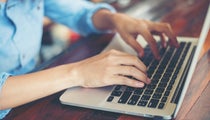If there’s anyone on earth who’s a pro on isolation, it’s astronauts.
In light of the coronavirus pandemic, space explorers, many of whom have spent months living in otherworldly isolation, are sharing their guidance on how to get by while living in confinement ― something many people around the world are adapting to in a bid to limit the spread of the outbreak.
NASA astronaut Scott Kelly spent a record-setting stint of almost a full year in space in 2015 and 2016.
“Being stuck at home can be challenging. When I lived on the International Space Station for nearly a year, it wasn’t easy. When I went to sleep, I was at work. When I woke up, I was still at work. Flying in space is probably the only job you absolutely cannot quit,” Kelly wrote in a New York Times op-ed over the weekend.
Kelly recommended setting and following a schedule, in order to establish structures around a combined work and home life environment. It’s important to pace yourself, he wrote.
“When you are living and working in the same place for days on end, work can have a way of taking over everything if you let it,” he said.
“Take time for fun activities: I met up with crewmates for movie nights, complete with snacks, and binge-watched all of “Game of Thrones” — twice.”
He stressed the importance of a consistent bedtime, and remembering to go outside and experience nature. When that’s not possible, he suggested something his colleagues relied on ― recordings of Earth sounds, like birds calling and trees rustling.
He also suggested hobbies (including reading, playing an instrument, art or crafts, all of which he said astronauts practice in space), keeping a journal and connecting with friends and family via videoconference.
Kelly shouted out former Canadian astronaut and ISS commander Chris Hadfield for his famous cover of David Bowie’s “Space Oddity,” shot from the space station.
Hadfield, too, has shared tips on self-isolation in the wake of the coronavirus outbreak.
In a video titled “An Astronaut’s Guide to Self Isolation,” Hadfield recapped four key steps for getting by.
His checklist includes:
1. Know the risk.
“Don’t just be afraid of things. Go to a credible source and find out what is truly the risk that you are facing right now. You, your family, your friends, the people that you care about,” Hadfield suggested.
2. Choose goals
“What are you trying to accomplish? What are your objectives?” Hadfield asked. He recommended establishing a “mission” for the afternoon, the week, or the month.
3. Identify constraints
Hadfield proposed assessing what’s holding you back from those goals, whether that’s work obligations, financial resources or other blockers.
4. Take action
Once you establish answers to those three points, the former astronaut suggested you act. That could mean taking care of family, starting a new project, reading, writing, learning to play an instrument or studying a new language.
“It’s a chance to do something different that you’ve maybe not done before,” he said.
Retired astronaut Buzz Aldrin, who at 90 years old is in a high-risk group for severe outcomes from the virus, has also given his two cents on the pandemic.
Asked by Ars Technica what he’s doing to stay safe, Aldrin answered: “Lying on my ass and locking the door.”
- Read our live blog for the latest updates from HuffPost reporters around the world
- Living in a lockdown? Our reporters in Europe have advice on how to cope.
- Why you should act like you already have coronavirus, even if you don’t have symptoms
- How to grocery shop for a quarantine
- Doctors answer the most common coronavirus questions
- What to do if your friends or family aren’t taking coronavirus seriously
- Please don’t believe these coronavirus scams
- The HuffPost guide to working from home
- 10 ways to practice solidarity while social distancing
- What coronavirus questions are on your mind right now? We want to help you find answers.
Bagikan Berita Ini

















0 Response to "Astronauts Share Insightful Tips On Self-Isolation During Coronavirus Pandemic - HuffPost"
Post a Comment